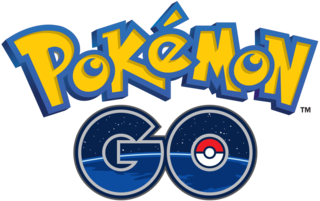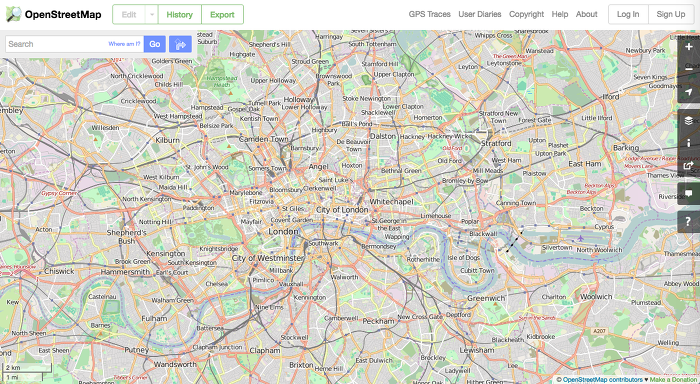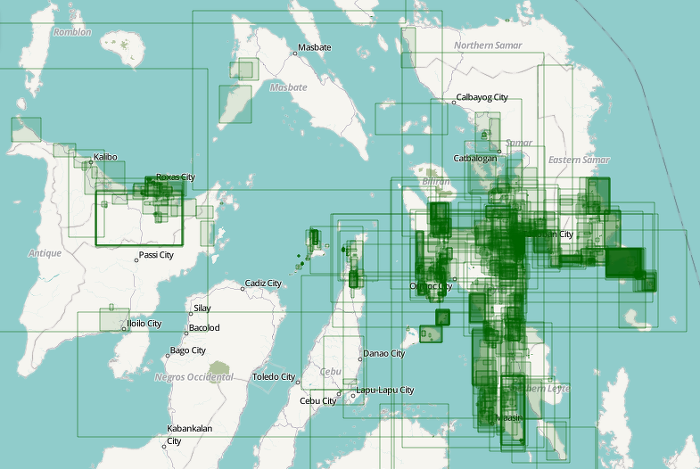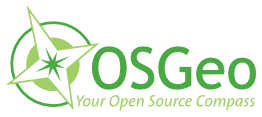6 Stories of Maps and FOSS4G Korea - News World
뉴스월드 8월호 기고글 http://www.newsworld.co.kr/detail.htm?no=2672
#1. Suwon, Korea
At the beginning of this July, Korea National Geographic Information Institute(NGII), a sort of national mapping agency located at Suwon, announced that it will give away around 50 thousand sheets of 1:1,000 large scale digital maps to the public. With earlier map data opening at the March this year, NGII now provides approximately 660 thousand maps to the public for free. This was widely accepted as huge achievement toward Government3.0 initiative. And this decision was expected to give tremendous monetary benefits to Korean users who previously had to pay some amount of money for buying maps. As a side note, it is still very hard to take Korean maps out of the country, as you see the recent controversy over Google’s request.
However, to some of geospatial experts, this decision was perceived as another symbolic sign of commoditisation of maps. If you look around, you may find lots of free map services already. You use Google, Naver, and Daum maps for travel planning, car navigation and finding places without paying a cent. Even more, you take the free map for granted just like the air around you. Whether map producers like it or not, this trend is inevitably true. Maps are getting cheaper and cheaper, getting commoditised and commoditised, to reach the point of demonetisation eventually. Demonetisation of maps usually comes when map providers realise the fact that free service will create more value than paid one. Google, Naver, Daum provides map service as free and create value from advertising service. Likewise, NGII’s giving away maps will stimulate geospatial SMB’s business and eventually will help Korean economy boost up.
#2. Sokcho, Korea
“Maps, maps, maps! We need maps!” It’s not the chant from the revolutionary mob. It’s from the Korean Pokémon Go players. To catch those cute Pocket Monsters using augmented reality technology in the mobile phone, there should be maps at the playing area. However, Pokémon Go has not been released and playable yet in South Korea, like most of other Asian countries, except Sokcho city area.
Due to skewed diamond style mapping cell, a small area around Sokcho is considered a part of North Korea mapping region by Niantic, developer company of this game, and this glitch makes the game fully playable in that area. Numerous people rushed to Sokcho to play the game and express bus ticket from Seoul was sold out. Ironically to say, not releasing Pokémon Go in Korea reminds us of the importance of maps in our daily life. Surprisingly just one game awoke us to realise how important maps are. We now even can’t enjoy the game without maps! Let’s imagine that if you don’t have any accessible map services around you or if you are not satisfied with the quality of the maps, and then what will you do?
#3. London, U.K.
Traditionally maps had been the exclusive property of the people or organisations that had the power and wealth because it required huge money, skilled persons, and complicated equipment to survey large area and publish maps. That’s why only national mapping agencies such as NGII, USGS, and commercial large mapping companies like NavTeq, Google, Microsoft provided map services before the start of OpenStreetMap(OSM).
In 2004, Steve Coast, then 24 years old computer science student at University College of London(UCL), had some dissatisfaction with maps at that time. Government funded national mapping agencies created massive map datasets, however they failed to freely and widely distribute those mapping datasets. And commercial map data had many legal limitations and license issues to use freely. Steve founded OSM project to tackle this kind of limitations by applying Wikipedia style culture and technology to map producing. OSM is a wiki map of the world. It's like Wikipedia, but it is a map. So anybody can add roads and buildings and a lot more instead of text articles. In April 2006, the OpenStreetMap Foundation was established to encourage the growth, development and distribution of free geospatial data and provide geospatial data for anybody to use and share. After 10 years of establishment of the foundation, the achievements are just terrific! It now has more than 2 million registered mappers and they map all around the world always. The total length of the road in OSM is now longer than that of commercial car navigation map.
OSM started to support turn-by-turn navigation and finally was installed at real car navigation system. In 2015, world largest car maker Toyota selected TeleNav as Brought-In Navigation supplier with OSM maps being the first use of OSM by a car manufacturer. OSM project has now been extended to OpenIndoorMap, OpenSeaMap, OpenHike & Bike Map. In short, with OSM, anybody can map the world without a huge amount of money and complicated equipment. It has been seen as the democratisation and decentralisation of mapping power!
#4. Eastern Visayas, Philippines
OSM has more than 2 million registered mappers, only fraction of those are active mappers though. If we could mobilise them to map the area where quick response is very critical, we could produce maps very quickly. The Humanitarian OpenStreetMap Team (HOT) do that! Up-to-dated free maps are very critical resources for relief organisations when they are responding to disasters or political crisis. HOT team do that by making and providing those maps to relief organisations. From the early days of OSM, many OSM members thought that open, free map data could help humanitarian jobs and the idea was proved during the Haiti earthquake in 2010. After a great success of producing Haiti relief map, HOT team was established as a legal entity.
On November 8, 2013, Typhoon Haiyan hit and devastated portions of Philippines, especially Eastern Visayas area. More than 5,500 people were killed only in Eastern Visayas region by the typhoon and quick relief was urgently needed at that time. However the lack of actual maps hindered the relief activities and HOT team jumped in to make most up-to-dated maps over the affected area. It took only 2 weeks to complete the mapping of almost all the affected area. HOT maps were used on the ground by aid agencies, for example, the American Red Cross had equipped their teams with OSM maps. Now power of maps helps other people survive.
#5. Chicago, U.S.A.
The Map is a just dataset. However great it might be, the map is useless without software. It’s just like food and body relation. If you are not ready to ingest or digest the foods, free healthy foods are useless. Likewise, you should have special software called Geospatial Information System(GIS) to make, manage, analyse and publish maps. Commercial GIS software are usually expensive and there are not so many other options. It means that whether you have free maps or not, you need to buy expensive software to do something with maps. Let’s think about that if we could develop GIS software in a collaborative way just like Wikipedia or OSM, how awesome it will be! That is FOSS4G(Free and Open Source SW for Geospatial)! Open source software is computer software with its source code made available with a license in which the copyright holder provides the rights to study, change, and distribute the software to anyone and for any purpose. In short, you can use, study, modify and even redistribute the FOSS4G freely!
To support the collaborative development of open source geospatial software, and promote its widespread use in the world, OSGeo(Open Source Geospatial) Foundation was established in 2006 at Chicago. For the last 10 years since its establishment, OSGeo has played a key role in developing, promoting, and spreading the FOSS4G all around the world. OSGeo now develops, manages around 30 geospatial software and has 49 local chapters all over the world. Recently FOSS4G is at the heart of many innovative geospatial start-ups business. Google also uses OSGeo’s project in its Google Earth program. One of the greatest activities from OSGeo is annual International FOSS4G Conference. The annual FOSS4G conference is the largest global gathering focused on free open source geospatial solution. FOSS4G conference brings together developers, users, decision-makers and businessmen from a broad spectrum of organisations and fields of operation. FOSS4G conference grows and grows, and now it usually takes place for 6 days. Here, one question for you. Can you guess last year’s hosting city of International FOSS4G conference?
#6. Seoul, Korea
Many of you may not know that last years’ International FOSS4G conference was held in Seoul in conjunction with Smart Geospatial Expo 2015. It was the first time hosting in Asia continent and was huge success with many international attendants.
Both events, FOSS4G Seoul conference and Smart Geospatial Expo, created a very unique place for attendants to connect to different people, culture and technologies by mixing two different events. Since, this year’s International FOSS4G conference takes place at Bonn, Germany, you may be sad that you can’t attend those unique opportunities this year. But, don’t worry. There would be another reunion between FOSS4G and Smart Geospatial Expo this year. How? This year's FOSS4G Korea, a local conference, will be held in conjunction with Smart Geospatial Expo just like last year. FOSS4G Korea and Smart Geospatial Expo will take place from 31st August to 2nd September at The-K Hotel. It’s all free(!) events.
If you visit and attend these events, you’ll learn much about recent trends of geospatial technologies such as open data, open source, smart city, point clouds and so on. Especially there will be Smart City special session on the first day of FOSS4G Korea and renowned persons like Chris Pettit(University of New South Wales, Australia), Daniel Kastl(Georepublic, Germany), Steve Liang(University of Calgary, Canada) will attend and give talks there. Smart Geospatial Expo is also full of excitement and many great conferences. You may meet cutting-edge geospatial technologies such as Drone, self-driving car, and 3D GIS. Attending both events will give you a unique experiences and you will never get disappointed. So, are you excited and ready to attend FOSS4G Korea and Smart Geospatial Expo now? See you all at The-K Hotel!
2016년 7월 20일
신상희









 6Stories_of_Maps_인쇄용.pdf
6Stories_of_Maps_인쇄용.pdf